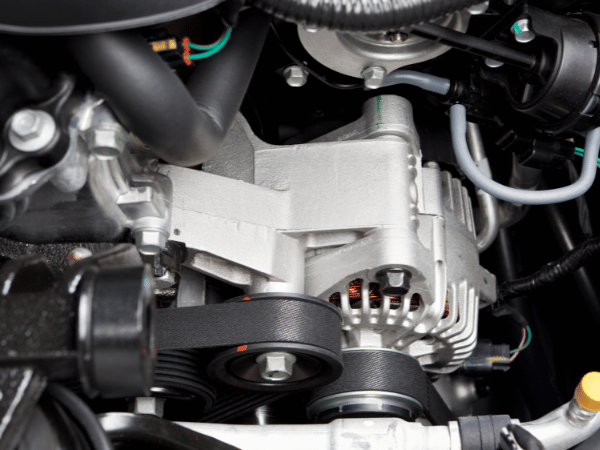How Extreme Temperatures Affect Your Car’s Belts and Hoses

Extreme heat and extreme cold can affect several of your car’s components, especially the rubber and plastic belts and hoses essential for critical systems like the cooling system, power steering, and battery charging. When temperatures rise or dip significantly outside typical ranges, the materials that make up these parts expand, contract, dry out, or become more brittle, which leads to cracks, leaks, and even complete failure. Knowing how high and low temperatures might impact your car can help you take preventative steps and make spotting issues faster. Keep reading to learn what to do and how to prevent potential issues.
CHECK BELTS AND HOSES MORE FREQUENTLY
Whenever there is an extended period of intensely hot or cold weather where you live, you should make a point to inspect the belts and hoses under the hood of your car more regularly. Look along the full length of each for any cracking, soft/spongy spots, shine from material wearing thin, and leakage from the hoses. Also, check that the belts are still snug and do not slip from the pulleys that drive them. If you spot any problems, have a mechanic evaluate the situation and replace components as needed.
TOP OFF FLUIDS
Extreme heat especially can cause faster evaporation of vital fluids in your car, including coolant, oil, transmission fluid, brake fluid, and power steering fluid. Check all fluids more often when dealing with temperature swings in either direction and top them off as needed to maintain proper levels. Letting them get too low poses a major problem for each system.
WATCH THE COOLING SYSTEM
Your engine cooling system faces the biggest challenge from overheating or freezing issues. In extreme heat, the coolant and radiator may struggle to keep the engine temp down. In bitter cold, the coolant can more easily freeze and expand in a way that cracks components. So, monitor your temperature gauge for any trouble signs when driving in more intense weather. Also, inspect the radiator, water pump, thermostat, hoses, and overflow tank for leaks indicating a larger issue.
USE GASOLINE ADDITIVES
Consider using fuel additives to help your engine and fuel system perform better in very cold or hot environments. Some contain detergents to remove deposits that can restrict flow in extreme temperatures, stabilizers to prevent gas breakdown, and anti-gel ingredients to keep ice from forming. These specialized fuel treatments can give you more confidence heading into temperature extremes.
LET THE ENGINE WARM UP
Don’t just start and immediately drive your car when exposed to drastically hot or cold overnight temperatures. Give the engine several minutes to warm up gradually and circulate the oil before placing heavy load demands on it. This gives the lubrication and combustion systems time to reach operating conditions safely. Rushing the process risks damage over time.
ADJUST TIRE PRESSURE
Tire inflation pressure can increase in hot conditions and decrease when cold. Over or under-inflated tires can lead to reduced handling, braking, fuel economy, and uneven wear. When facing extreme temps for a longer period, check your PSI more frequently and put air in or let it out as necessary to meet vehicle recommendations. Having properly inflated tires outweighs small seasonal adjustments.
SERVICE YOUR VEHICLE IN ST. PETERSBURG, FL
Major heat waves or cold snaps can stress your car’s belts, hoses, and other components. However, staying vigilant on fluid levels, changes in driving behaviors, tire pressure adjustments, and looking for problems early can minimize these impacts. If you do experience any issues with your car or just want the peace of mind of a check-up after intense temperatures, contact JB Import Automotive Repair at
727-353-8457 to schedule affordable and trustworthy service.




